Blogs
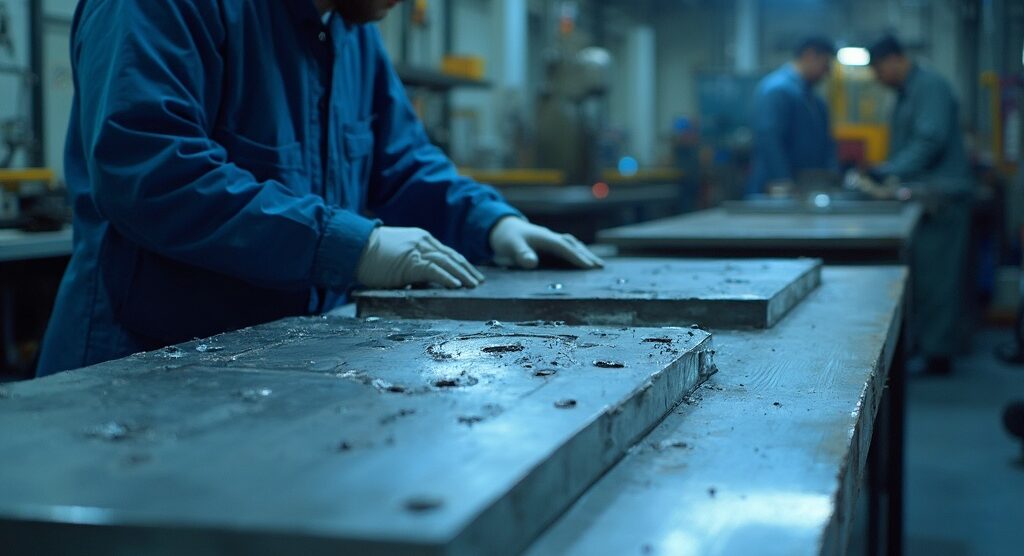
Top 7 Applications of Alloy 625 in Special Metals
Introduction
Alloy 625, also known as Inconel 625, stands out as a premier choice in the realm of high-performance materials, thanks to its exceptional strength and unparalleled resistance to corrosion. With a unique composition that includes significant amounts of nickel, chromium, molybdenum, and niobium, this alloy is engineered to thrive in the most demanding environments, from aerospace applications to chemical processing.
As industries increasingly seek materials that can withstand extreme conditions and provide reliable performance, understanding the properties and applications of Alloy 625 becomes critical. This article delves into the unique characteristics of Alloy 625, its applications across various sectors, and the advantages it offers in high-stress environments, while also exploring the innovative fabrication techniques that enhance its performance.
By examining these facets, procurement managers can make informed decisions that leverage Alloy 625’s capabilities to meet the challenges of modern manufacturing and operational demands.
Understanding the Unique Properties of Alloy 625
625, commonly referred to as Inconel 625, is classified among the alloy 625 special metals, celebrated for its remarkable strength and exceptional corrosion resistance. This alloy’s unique composition—comprising roughly 58% nickel, 20% chromium, 8% molybdenum, and 3.6% niobium—bestows exceptional mechanical properties that are essential in challenging contexts. Notably, alloy 625 special metals demonstrate excellent weldability and ease of fabrication, making them an ideal choice for complex designs.
The use of alloy 625 special metals allows for the maintenance of structural integrity under elevated temperatures, which is particularly advantageous for industries such as aerospace and chemical processing, where harsh environmental conditions are prevalent. Recent studies indicate that the alloy’s corrosion rate can be as low as 0.65 mm/year when subjected to specific soft-annealing treatments, underscoring its effectiveness in resisting corrosion compared to other materials. Additionally, Beryllium Copper is employed in various uses, including electrical engineering and industrial machinery, due to its superior insulation properties and compliance with industry standards.
Specifications for Beryllium Copper include dimensions such as rods and sheets, which are available in various sizes to meet specific needs. Mica Tape Products, recognized for their high-temperature resistance and electrical insulation capabilities, are vital in uses spanning from fire-resistant cables to aerospace components. These products exhibit excellent dielectric strength and thermal stability, making them suitable for critical electrical insulation systems.
Furthermore, the stress corresponding to 5% of plastic strain in tensile tests at 600 °C provides insight into the performance of alloy 625 special metals under stress, making them suitable for high-stress uses. Experts Eiselstein and Tillack have noted, ‘They confirmed the marked acceleration of the age-hardening kinetics with this multistage treatment,’ which enhances its performance in crucial uses. A case study titled ‘Defect Analysis and Fatigue Resistance’ analyzed surface roughness and sub-surface defects, highlighting their impact on fatigue life and demonstrating the significance of defect characteristics.
These attributes make Inconel 625, a type of alloy 625 special metals, a leading material choice for uses requiring durability and reliability, alongside high-performance options like Beryllium Copper and Mica Tape.
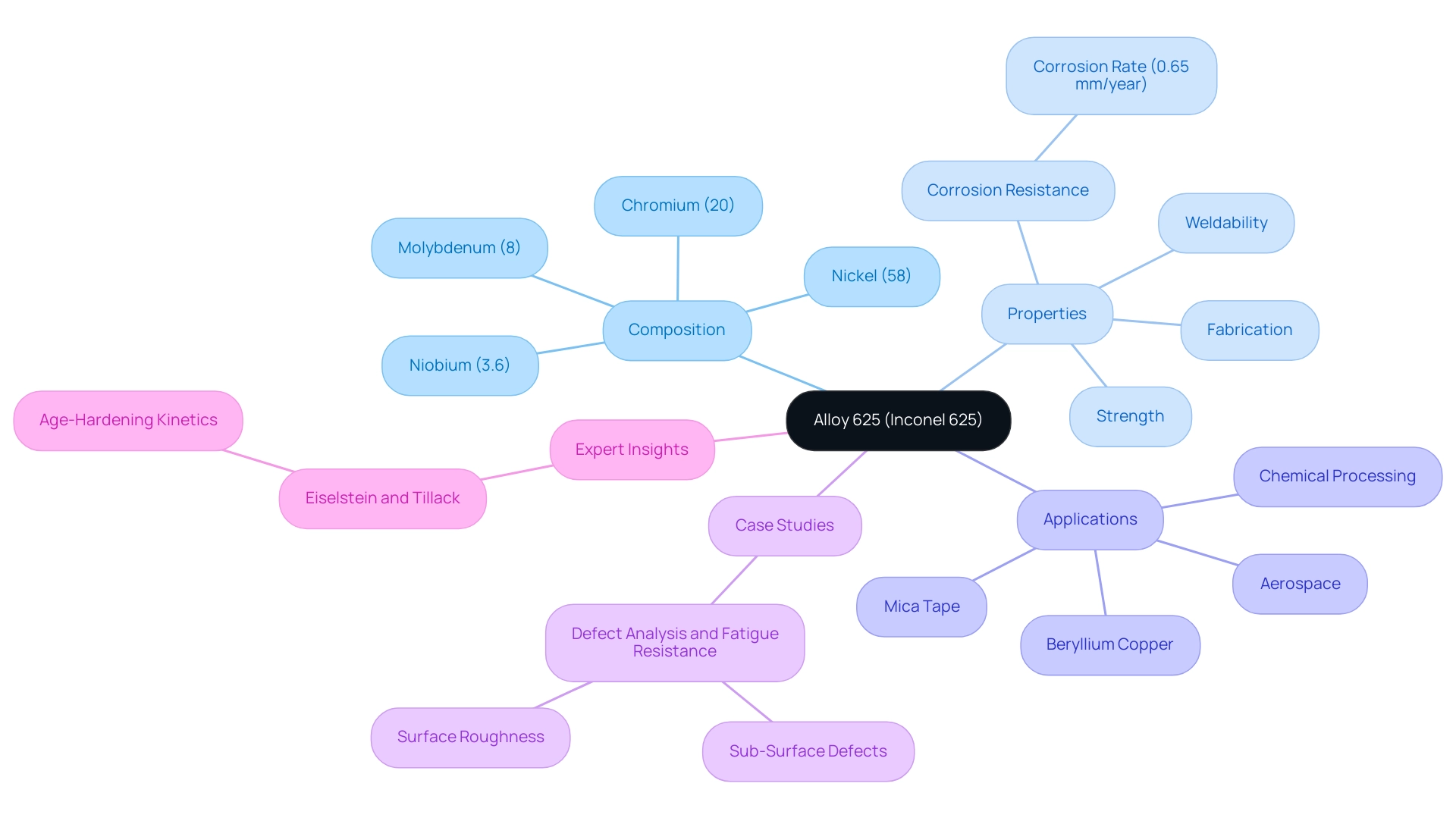
Key Applications of Alloy 625 in Various Industries
Alloy 625 special metals are acknowledged for their wide-ranging uses in numerous sectors, mainly because of their distinctive characteristics that improve operational safety and efficiency in harsh environments. In the aerospace sector, alloy 625 special metals are essential for gas turbine engines, exhaust systems, and structural components. The high strength and exceptional oxidation durability of alloy 625 special metals make it ideal for these critical applications.
As noted by industry experts,
Metal alloys are novel solutions to long-standing industrial problems such as the need for heat-resistant parts and materials.
This sentiment is particularly relevant in aerospace, where the demands for performance are stringent. Significantly, stress reduction in alloy 625 special metals is almost finished when heated to 1600F, further highlighting its appropriateness for high-temperature uses.
In the marine sector, the alloy 625 special metals shines in parts exposed to seawater, like piping and valves, because of its exceptional corrosion durability. The ability of alloy 625 special metals to withstand harsh marine conditions ensures longevity and reliability, making it a preferred choice for manufacturers. Recent news emphasizes its growing application in marine settings, propelled by advancements in corrosion protection technology.
Furthermore, in the chemical processing industry, alloy 625 special metals are employed in essential parts such as heat exchangers and reactors, where durability against harsh chemicals is crucial. Moreover, alloy 625 special metals, such as Inconel, are favored for jet engine fabrication because of their capacity to maintain oxidation tolerance and tensile strength under extreme temperature fluctuations. This is illustrated in the case study of jet engine construction, where alloy 625 special metals are utilized for their performance in high-temperature combustion processes and cooling systems in aircraft.
Simultaneously, Mica Tape products, such as Mica Insulation Tape and Mica Sheet Tape, are crucial for high-temperature resistance and electrical insulation across diverse uses, enhancing safety in settings where 625 alloy is also utilized. Mica Insulation Tape offers exceptional insulation characteristics essential for electrical engineering, ensuring reliability in challenging conditions, while Mica Sheet Tape is perfect for insulating expansive flat surfaces in aerospace and automotive uses. Non-sparking tools, such as those made from beryllium copper, complement this safety aspect, particularly in explosive environments, where they offer a secure alternative for maintenance and operational tasks.
The versatility of Material 625, along with Mica Tape and Non-Sparking Tools, not only enhances critical uses but also strengthens their position as strategic material selections in demanding industries, making them essential for procurement managers to contemplate in their sourcing strategies.
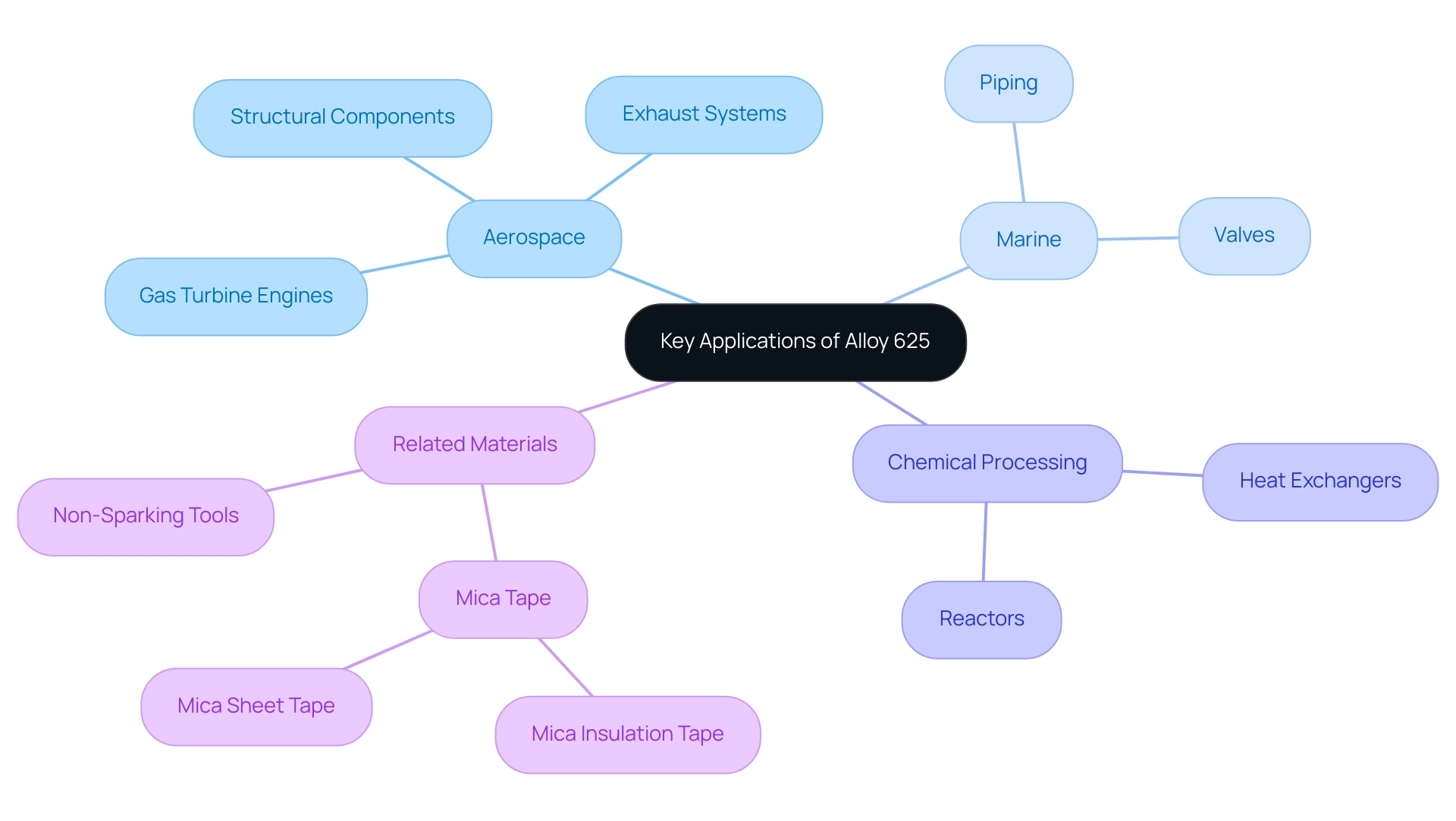
Advantages of Alloy 625 in High-Stress Environments
Material 625 is celebrated for its outstanding performance in high-stress settings, demonstrating exceptional tensile strength and fatigue durability, enhanced by notable ductility. These characteristics empower the alloy to excel under severe conditions, such as elevated temperatures and corrosive atmospheres. Its enhanced durability against pitting and stress corrosion cracking establishes 625 as a favored option in scenarios where other substances may fail.
Notably, the dynamic modulus of elasticity, measured for a plate 3/8 in. thick, annealed at 1925°F and rapidly cooled, further substantiates its performance claims. In addition to its extensive use in:
- wellhead components
- sheathing
- fasteners
- clamps
- downhole equipment for corrosive/sour service
- propulsion motors
- reactor core and control rod components
- chemical process equipment
alloy 625 special metals plays an integral role alongside Non-Sparking Tools, which are crucial for operations in explosive potential environments, ensuring enhanced safety and compliance.
Moreover, Mica Tape Products are crucial for high-temperature durability and electrical insulation, rendering them invaluable in various uses, including:
- electrical wiring
- thermal insulation in high-stress situations
The mixture of these materials greatly reduces the risk of catastrophic failures, thereby enhancing reliability in essential uses. Recent studies have further confirmed its outstanding fatigue resistance, making it an indispensable material in high-stress scenarios.
As Jacob Schmidt from Sales Nickel and Cobalt Alloys notes, ‘the material’s versatility across various applications underscores its strategic value in procurement decisions,’ highlighting its role in everything from fasteners to propulsion motors while emphasizing the necessity of using reliable, non-sparking tools and high-temperature resistant materials like Mica Tape in hazardous settings.
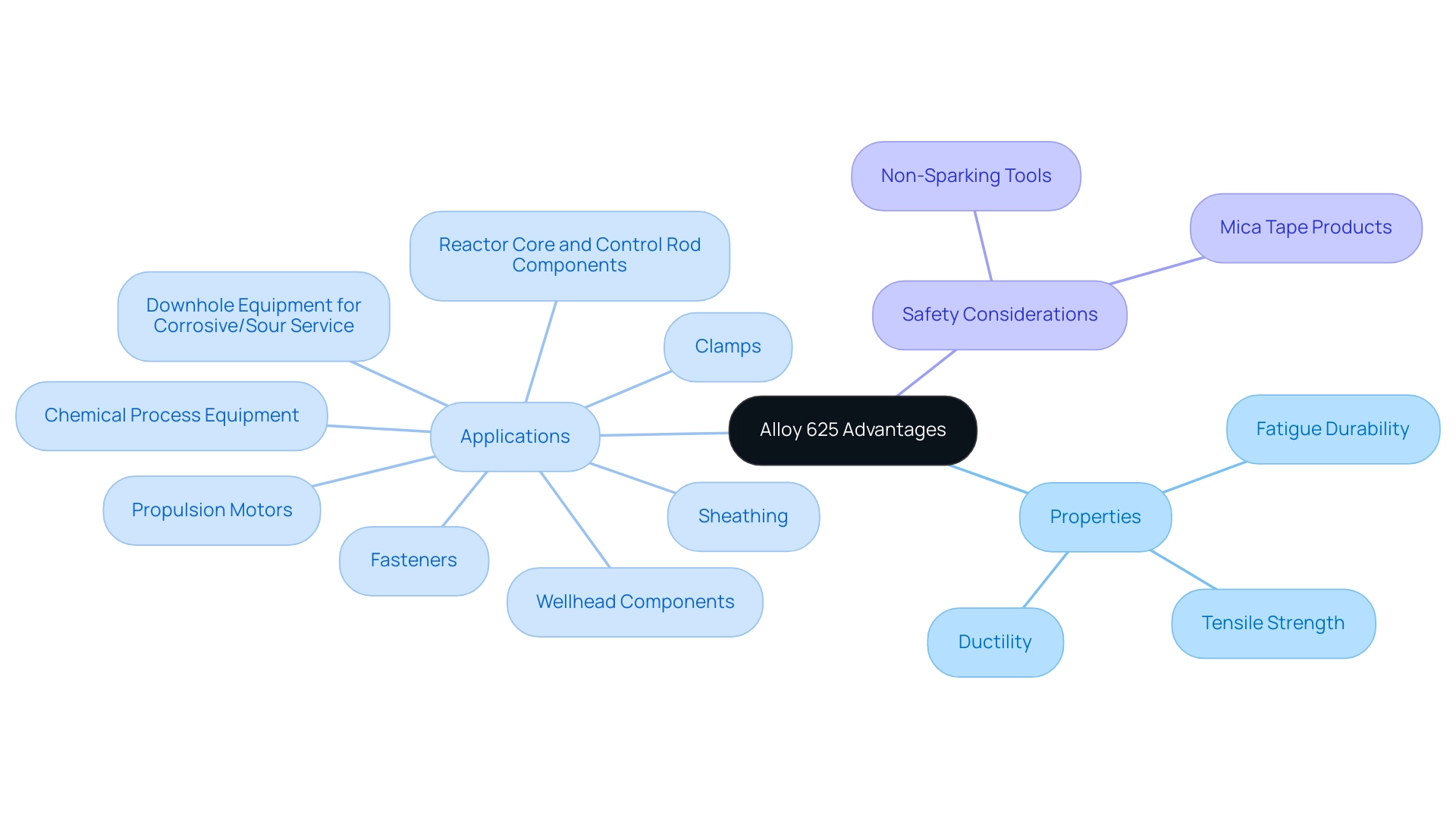
Fabrication and Processing Techniques for Alloy 625
The fabrication and processing of alloy 625 special metals demand precision and specialized techniques to preserve their exceptional properties. Among the prevalent methods are:
- Welding
- Machining
- Heat treatment
Each plays a critical role in the performance of alloy 625 special metals. Notably, welding methods such as gas tungsten arc welding (GTAW) and submerged arc welding (SAW) are employed to maintain the renowned corrosion resistance of alloy 625 special metals.
A statistic worth mentioning is that the weld achieves complete penetration, meaning that the height (h) equals the part thickness, which is crucial for ensuring structural integrity. A user recently shared a cross-section of a weld, showcasing a method for estimating the fatigue strengths of materials lacking extensive testing or published data, emphasizing a conservative approach to this estimation and underscoring the need for innovative fabrication techniques.
When it comes to machining material 625, employing sharp tools and selecting appropriate cutting speeds are essential to prevent work hardening, ensuring efficiency and precision in production.
Moreover, heat treatment processes, including solution annealing, significantly enhance the mechanical properties of alloy 625 special metals. A case study titled Performance of INCONEL 625 Weld Overlay examined the mechanical and microstructural properties of a weld overlay deposited on ASTM A516 Grade 70 carbon steel. The study revealed satisfactory performance across both as-welded and heat-treated conditions, but it also highlighted the presence of Partially Diluted Zones (PDZ) along the fusion boundary, which could pose challenges during fabrication.
Understanding these thermal cycles is vital for mitigating such issues. As Torsional Stress aptly states, a backing strip can be crucial in retaining molten metal at the root of the weld, increasing the thermal capacity of the joint and preventing warping. Such insights are invaluable for manufacturers aiming to enhance the utilization of alloy 625 special metals in challenging environments.
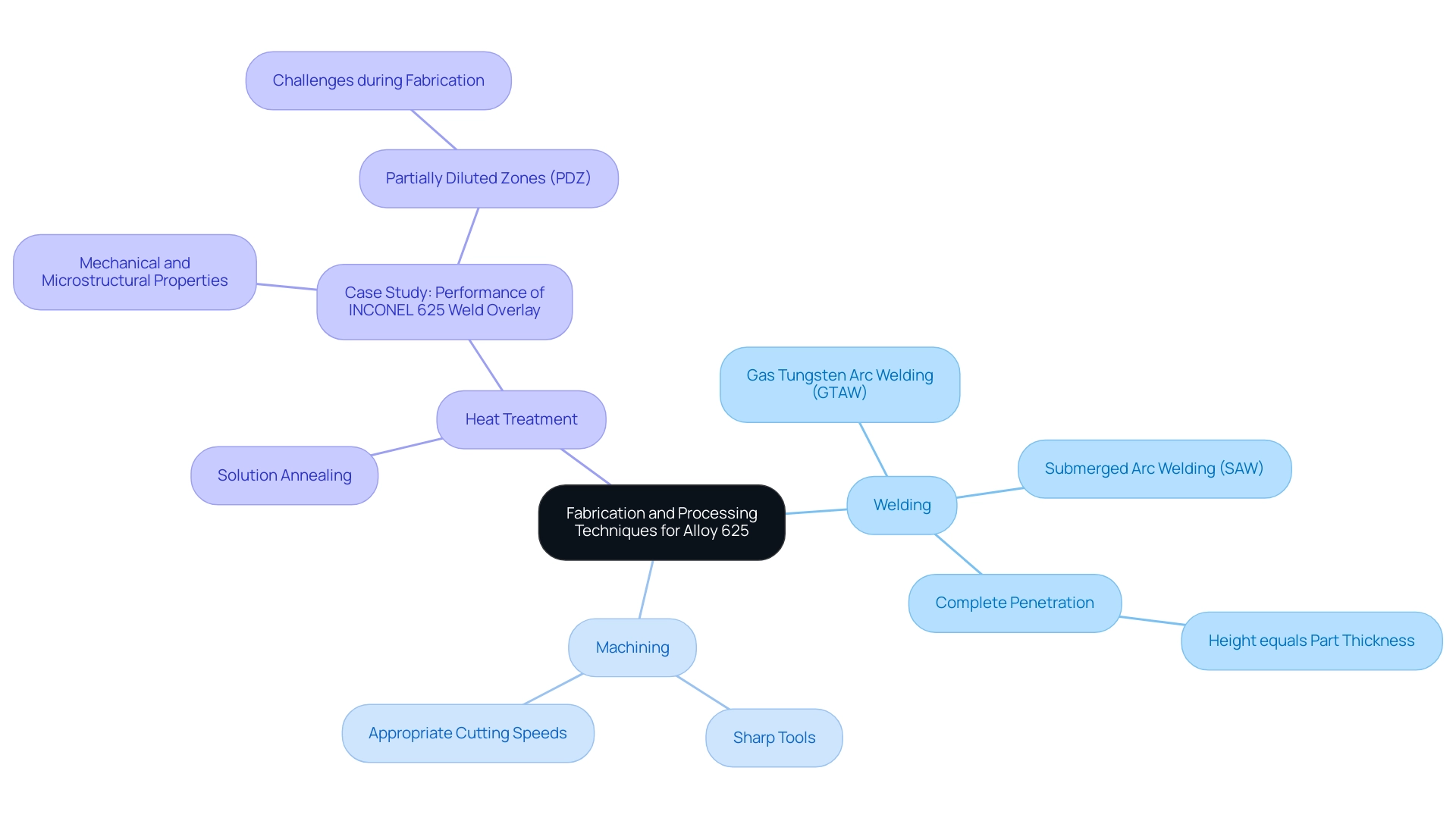
Future Trends and Innovations in Alloy 625 Applications
As we look to the future, Material 625 stands at the forefront of manufacturing innovation, particularly with the rise of additive manufacturing (3D printing). This technology promises to unlock new applications for the alloy, allowing for enhanced design flexibility and performance. Ongoing research into combining and treatment processes aims to further enhance the remarkable characteristics of 625, which already showcase yield strengths up to 1167 MPa and ultimate tensile strengths reaching 1632 MPa—significantly outperforming conventional materials.
A key case study highlights that welding of 625 material can be accomplished using gas-shielded processes with either tungsten or consumable electrodes, emphasizing the importance of clean surfaces and good joint alignment to achieve mechanical properties that mirror those of the base metal. Additionally, the growing focus on sustainability within industries positions 625 as a candidate for applications that emphasize eco-friendly practices. For instance, recent advancements in cold sprayed Inconel 625 coatings have achieved an impressive adhesion strength exceeding 57.0 MPa, showcasing the alloy’s versatility.
As noted in a recent study, “This study may contribute to the profound comprehension of heat treatment procedure on microstructure evolution as well as mechanical properties and corrosion resistance of laser powder bed fusion processed Inconel 625.” For procurement managers, remaining informed about these trends and innovations will be essential for effectively integrating alloy 625 special metals into supply chains and capitalizing on its evolving capabilities.
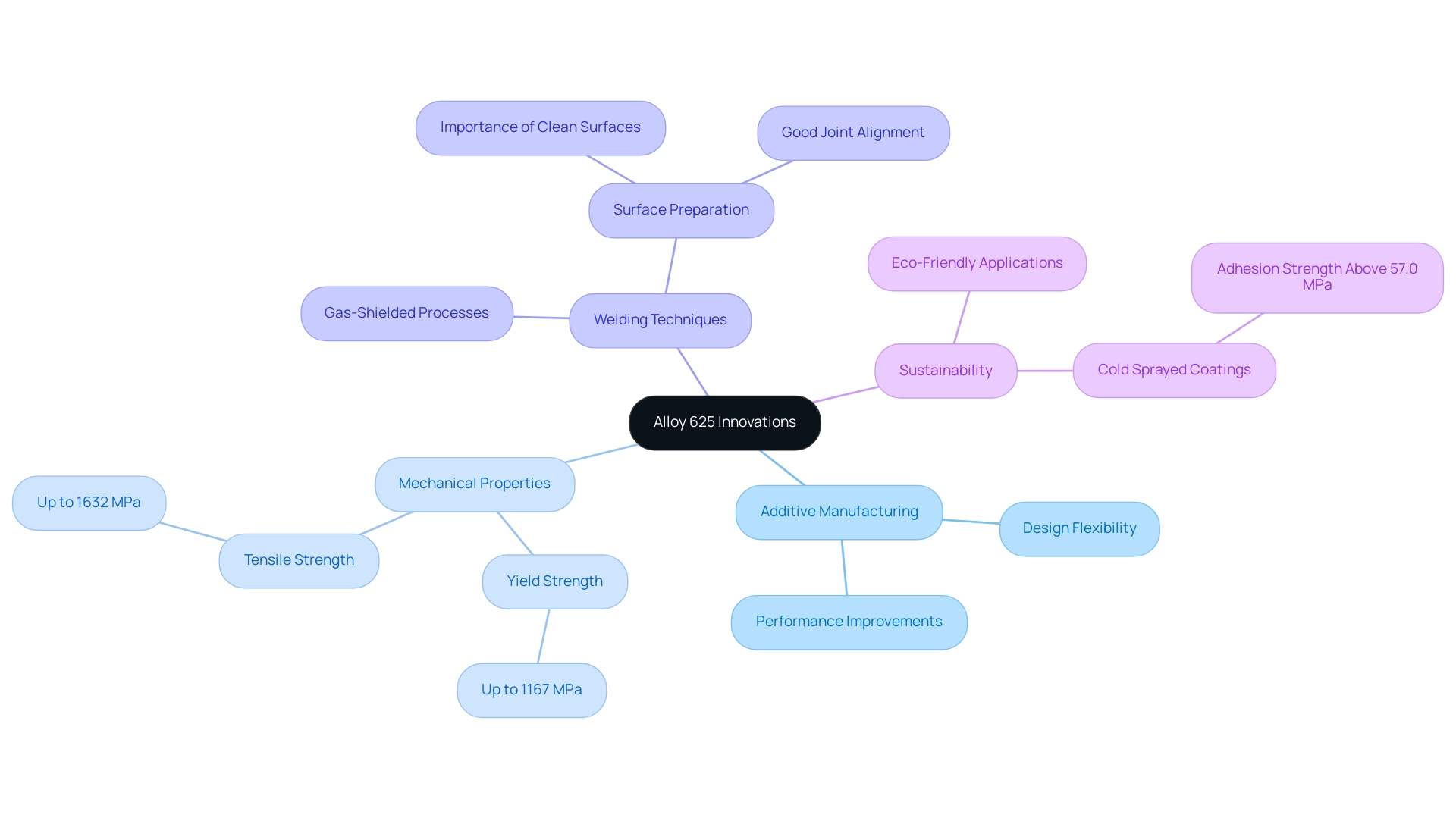
Conclusion
Alloy 625, or Inconel 625, represents a pinnacle in high-performance materials, combining exceptional strength and remarkable corrosion resistance. Its unique composition enables outstanding mechanical properties, making it an ideal choice for demanding applications across various industries, including aerospace, marine, and chemical processing. The extensive discussion of its properties reveals why Alloy 625 is favored in environments characterized by extreme conditions, emphasizing its suitability for high-stress applications where other materials may fail.
The applications of Alloy 625 are vast and critical, demonstrating its versatility in:
– gas turbine engines
– marine components
– chemical reactors
This alloy not only enhances operational safety and efficiency but also plays a vital role in innovative fabrication techniques that ensure its performance is preserved during processing. The insights into welding, machining, and heat treatment techniques underscore the importance of precision in maintaining the alloy’s integrity, ultimately contributing to its reliability in challenging environments.
Looking ahead, the future of Alloy 625 is bright, particularly with advancements in additive manufacturing and sustainable practices. As the industry evolves, procurement managers must remain vigilant about emerging trends and innovations that can further enhance the capabilities of Alloy 625. By leveraging its unique properties and exploring its applications, organizations can make informed decisions that not only meet current operational demands but also position them for future success in an increasingly competitive landscape.




